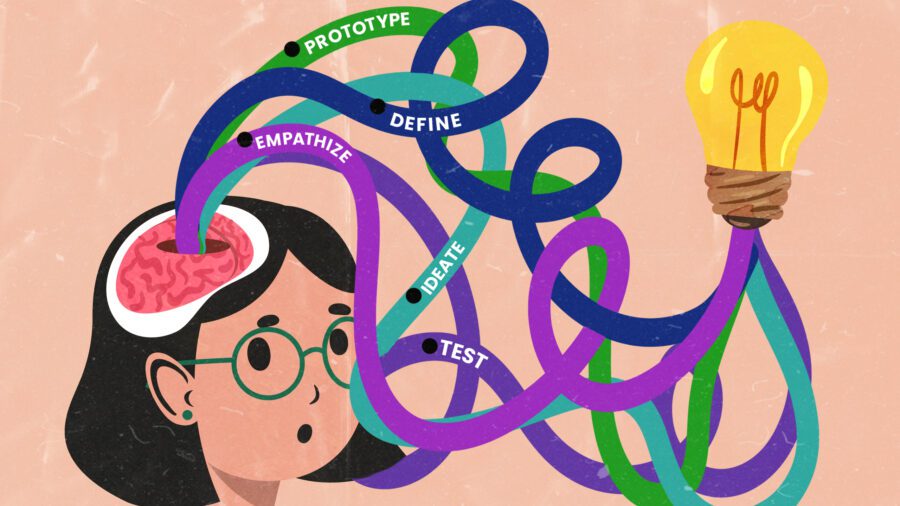
A Beginner’s Guide to Mastering Body Language in a Remote World
How’s your body language?
Are you even aware of it? Most people aren’t. Becoming aware really takes a conscious decision to pay attention, and it takes practice to overcome habitual gestures, postures, and ways of being in the world or on the screen.
It’s incredible how much we convey without words. It’s even more incredible how much of an impact seemingly inconsequential, habitual body language patterns have. For example, did you know that having open palms makes you appear more trustworthy? It’s true, and it may be because closed palms and hidden hands may have once concealed weapons, according to some experts.
The world of body language analysis is fascinating. There are so many ways to analyze a smile that you would never have thought of. Body language reading has proved useful by FBI members, and it can certainly help you in your life, from work meetings to family gatherings to romantic connections.
Body language can get even tricker to use or interpret in a remote world. Without seeing someone’s full body, you have to really hone in what you can see. Since Zoom and Facetime have become the norm, it’s time to look at body language on a whole new level.
In this article, we’ll look at some non-verbal communication examples, learn about digital body language, show you why the eyes are truly the windows to the soul, and prep you to take advantage of nonverbal communication without buying a body language book. Are you ready to dive in? Let’s get started!
Sit Back Far Enough
First off, let’s make sure people can see your body language! When you’re on a video call, you need to make sure you sit back far enough for people to actually see your gestures, posture, and stance. Your goal shouldn’t be to do a close-up. At the same time, you want to be close enough to feel relatable and almost as if you’re there. Every environment is different, so take some time to experiment and find the distance that’s just right.
Lean Slightly Into the Screen
While you don’t want to be too close, you do want to lean in a bit. To do this, position yourself and get your posture as straight as possible, then lean slightly forward. Doing so projects openness and warmth, while leaning back does just the opposite. Signal your interest in the other person and the topic of conversation with an open posture that’s slightly tilted toward the screen.
Signal Friendship and Connection
Remote connections remove a lot of the things that would establish warmth and connection in a physical meeting. Shaking hands, leaning in, and feeling out the vibe of a person or situation are all missing. Yet, it’s important both in business and in life to establish that warmth. We want to hang out with people we like and trust, and business is no different. We do business with other people, not their company or brand. Likewise, we buy things from people who we like and trust.
Some of the following tips might seem obvious or simplistic, but rest assured, plenty of people need the reminders. When we’re talking to someone through a screen, in particular, it’s easy to zone out, look at our phones or the clock, or just avoid making an effort because it’s easier. Maybe we’ve gotten complacent and apathetic in our remote meetings, but that complacency will not do you favors in your professional life.
Don’t Forget to Smile
There’s no doubt about it — body language on a screen is more limited than in-person, which means you really want to emphasize the aspects that do come across. So don’t forget to smile, and smile often, but do keep it genuine. Whether consciously or not, people can tell when you’re faking it. A genuine smile will help you come across as trustworthy and genuine.
Keep Eye Contact
Much like your smile, your eyes are one of the body language tools you have to work with on camera, so be sure to keep eye contact constantly. If that makes you uncomfortable, you can look directly above people’s eyes at their eyebrows. Zoning out is all too easy in a remote world, so show the other person you’re still engaged by maintaining your gaze.
Raise Your Eyebrows
Another way to signal you’re friendly is through a quick movement of the eyebrows. Raising them up and down quickly is a sign of acknowledgment that even apes and monkeys do. Imagine catching the eye of a friend at a party mid-conversation with someone else. That little eyebrow movement tells them you notice them, and you welcome them. On-screen, raise your eyebrows when everyone first hops on and follow it with a smile.
Keep Your Hands Visible and Up
It’s amazing how every part of our bodies can convey something we don’t even realize. Your hands, for example, make a big impact on how people see you. Specifically, they tell a lot about how much people can trust you.
Open palms might not seem like anything to you, but subconsciously, they will make people feel less guarded. Just try putting your hands in your pockets or behind your back when someone’s talking to you. Chances are, they’ll get a little uneasy. When you consider that, in the past, closed palms could hide a weapon, you’ll understand where this seemingly natural preference for open palms comes from.
Try Mirroring the Other Person
Mirroring is one of those people skills that seems to have endless variations and benefits. In the context of remote connections, you’ll want to mirror another person’s gestures, posture, and even their pace of speech or speech patterns. You can also use some of the words they use to create a feeling of familiarity and understanding. It’s not body language, but it can go a long way in creating a bond.
Join In 200 Million+ On The Journey to Greatness
Create the Right Set and Setting
Beyond your body language, having the right surroundings can positively impact how people see you. So, consider your “set design” at home. Natural light is always wonderful, as is being outside.
Keep Your Space Uncluttered
Keep the focus on you by keeping your space clear and uncluttered. Mess and chaos are distracting and signal that you’re unorganized and unreliable. When it comes to a work call, needless to say, you should have a professional background. However, you also want it to look organized, clear, and reflective of who you are and what you want to project.
Leverage Color Psychology
The right color can project so many things without you ever having to say a word. Color psychology is well-proven. Specific colors can change your heart rate, breathing, and blood pressure.
Red: Projects confidence and assertion, has been shown to reduce analytical thinking, can come across as hostile or volatile in an office environment
Green: Associated with money, fosters feelings of harmony, associated with newness
Blue: Calming, associated with blue skies and happy days, thoughtful, and logical
Black: Denotes professionalism and seriousness, helps you appear strong and powerful, is elegant and fashionable
Purple: Has an air of royalty, associated with mystery, is sophisticated and sensual
White: Projects purity and trustworthiness, shows openness and adaptability
Yellow: Creative, bright and optimistic, is a mood lifter
Orange: Creative, inspired, is energizing and uplifting
Project Confidence
Confidence is everything. Being self-assured isn’t just about vanity either. You could be a meditation teacher, researcher, scientist, or mentor with important, life-changing information to get across to your followers and audiences, but to get anyone to take you seriously, you must appear self-assured. Without that confidence, you risk losing your platform and ability to help others.
Whether you need to land a job, connect with a colleague, or make a good impression on your crush, mastering confident body language on and off the screen is well worth the effort.
Take Up Space
Scrunching in, crossing your legs, letting your knees collapse in toward each other, and crossing your arms are not signs of confidence. Women are particularly prone to some of these habits, which denote self-consciousness, self-doubt, anxiety, or feeling closed off. Since women have been consciously and unconsciously told not to take up space, giving yourself the freedom to take up space can feel awkward at first, but it’s worth it.
In-person, it might mean widening your stance or walking around the room while giving a presentation. On a Zoom call, you might focus more and maintain an open posture and use hand gestures while making your points. For example, you might bring up a stat and indicate how large it is by widening your arms.
For any gender, crossing your arms can come off as aggressive, so avoid doing it. On the other hand, hunching your shoulders in and looking down comes across as fearful and unsure.
Avoid Fidgeting
Have you ever suddenly experienced an itch while in a business meeting that made you nervous? A sudden urge to scratch your nose or your ear are indications of stress, worry, doubt, among other things. There’s a whole science to studying movements involving our ears, head, nose, and more.
Keep Your Head Up
Whether on zoom or in real life, keeping your head up can make a huge difference in how others perceive you! Imagine you’ve got a string at the top of your head that’s being pulled up by the ceiling. You want your head that straight.
Looking down and avoiding eye contact are all signs of low self-esteem or fear.
Above all though, don’t let worrying about your body language make you feel anxious, as that can come across on camera. Just try out a few techniques, and if you do struggle with confidence, seek out help from a coach or mentor. It’s well worth it.
You Can Master Body Language
Understanding and using body language effectively is a skill like any other. With practice, you can master it. It’s important to develop awareness of how you naturally and automatically use your body and what it’s saying and assess if you create connection, project confidence, and establish trust.
These skills will help you in literally every area of your life. Remote body language can be especially tricky, which means you’ll want to hone in on a few key things like raised eyebrows, a genuine smile, and open palms. Be sure to sit back far enough so people can see you! You can also have fun with it by using color psychology to create an impression before you ever say a word.
Greatness Authors
Greatness Authors is a collection of writers, thinkers, curiosity experts, and students of the world who are committed to bringing you the most up-to-date, impactful, and inspiring information surrounding Greatness topics.

Redefining Poetry: How Instagram Sensation Rupi Kaur Showed That Poetry Is for Everyone

The Young Professional’s Guide to Advocating for Yourself at Work & Setting Healthy Boundaries

Olympian Yusra Mardini’s Incredible Story of Resilience, Rescue, and Refugee Rights

A Beginner’s Guide to Effortlessly Attracting Money and Growth Opportunities

Psychologist Edith Eger’s Inspirational Journey to Find Forgiveness and What It Means for You










